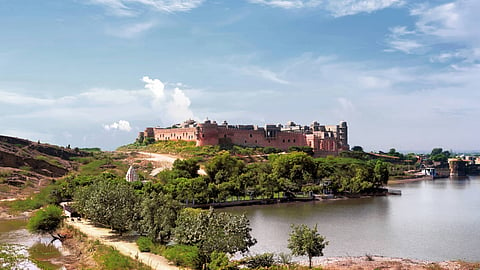Hospitality sector keeps its fingers crossed
Depending on the destination and type of hotel, 2021 has been a great year or a disastrous one. Leisure destinations have seen soaring demand from late summer, with many hotels and resorts seeing record occupancy rates and high average room rates (ARRs). On the other hand, business hotels, especially in the larger cities, tried desperately to drum up revenues – from offering home deliveries of food from their high-profile restaurants to offering office spaces. Attrition remains high for the sector.
Estimates and predictions differ over the extent of losses. The domestic hospitality industry is likely to witness a decline of over 65 per cent in 2021, according to ResearchAndMarkets.com. The Federation of Hotel & Restaurant Associations of India (FHRAI), estimates that the Indian hotel industry has taken a hit of Rs1.30 lakh crore in revenue due to the impact of the Covid-19 pandemic in 2021.
It estimates that 25 to 30 per cent of establishments including about 60,000 hotels and 500,000 restaurants have already shut shop and another 15 per cent could follow suit if there is no impetus from the government to revive the sector. Pradeep Shetty, senior vice-president, HRAWI pointed out that while domestic tourism has been the bright spot for Indian hospitality in remote locations, it accounts for about 20 per cent of the overall hotels in the country.
Like travel, hospitality too is surviving on the back of domestic demand. “Domestic tourism has helped the industry to weather the storm,” says JB Singh, President and CEO of InterGlobe Hotels (IGH), a joint venture between InterGlobe Enterprises and Accor Asia Pacific. He is optimistic about the outlook for the sector. “The industry has shown greater resilience after the second wave when the snap back was significantly faster. Occupancies have returned to the pre-pandemic levels and we are witnessing strong month-on-month growth over the last few months in ARRs. Overall, industry is expected to perform at 75-80 per cent of pre-Covid levels.”
Many took the opportunity to relook at the business. “The Leela took this opportunity to rationalize our costs and bring in synergies across the portfolio rather than cut back,” says Anuraag Bhatnagar, Chief Operating Officer, The Leela Palaces, Hotels and Resorts. “Operational efficiencies, rightsizing of manpower and cost synergies have been the focus in order to get permanent savings. From contactless check-in to mobile keys to e-butlers to e-menus – we have seamlessly integrated technology as an enabler of experiences allowing the choice for guests to interact as much as they are comfortable doing.”
MICE and corporate business have been most affected during this period, especially for a segment like ours which has a large base of corporate business and smaller meeting spaces primarily meant for corporate events, points out Singh. Agile changes included offering intimate weddings and other social gatherings, and converting meeting spaces into co-working spaces. While guests sought seclusion, many hotels focussed on staycations. “Usual MICE business will certainly take time to come back to its normal levels and in the meantime, the best way out is to be agile and change the focus and strategy to cater to the type of demand out there in the market and be able make use of available space in the best possible manner.”
A vast number of hotels and restaurants also started, of which many projects were delayed and stood to make greater losses by remaining closed. Many leading hospitality chains expanded to new markets, most notably the Leela opening three hotels in a year for the first time, while Taj Hotels and ITC too saw a flurry of openings in the latter part of the year. Among the high-profile launches were of Raffles and Six Senses brands, both of which opened their first hotels in Rajasthan.
As we enter 2022, the economy is in line to revive, and it will continue to give a strong impetus for travel, Singh elaborates. “Limited penetration of rooms will continue to present development opportunities for the industry. Intra India economy has been historically strong and will continue to be the foundation of our growth. There is no doubt that there is a dire need to ease global travel restrictions to promote mobility of goods and services and tourism. This will fast track us back to pre-Covid performances. Having said that, it is critical that the third wave is effectively contained. The government has to draft policy and drive governance to become catalysts to manage such events. So, despite a very positive outlook, we must remain cautiously optimistic to ensure that we head towards a sustainable recovery and prevent further erosions in balance sheets.”
As Puneet Dhawan, Senior VP Operations, Accor India & South Asia, put it, “It is still hard for anyone to predict when our industry will completely recover. Just like we witnessed encouraging signs of recovery after the first wave, the recovery after the second wave has also been reassuring. We believe that the primary target for the industry as a whole right now is bringing back consumer confidence and placing a magnified focus on safety and hygiene.”

